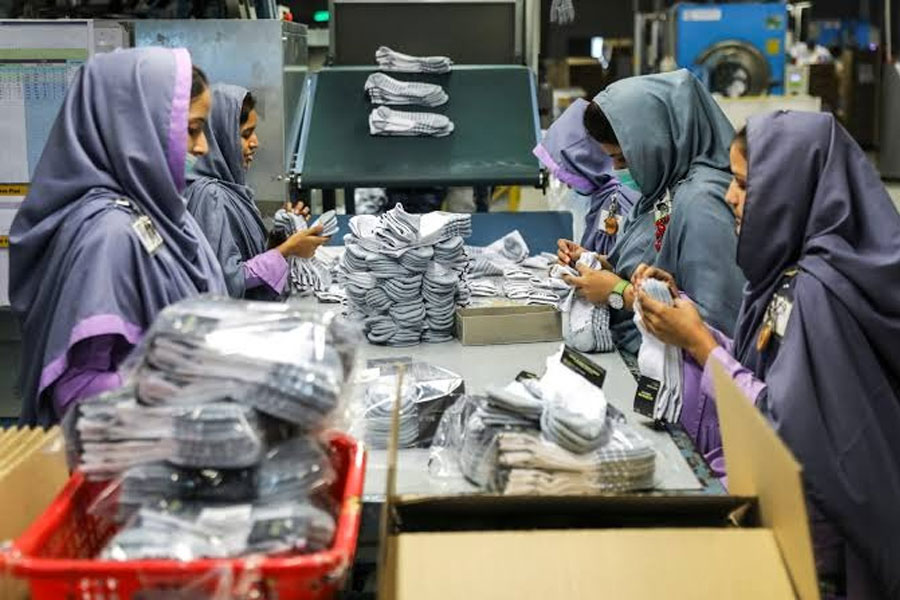According to a recent report by the World Bank, only 22% of women in Pakistan are employed, one of the lowest rates of female labour force participation in the world.
This trend is a cause for concern, as having a low number of women in the workforce can have significant disadvantages for a country’s economy and society as a whole.
Firstly, a low rate of female employment can lead to lower economic growth and productivity. When only a small portion of the population is contributing to the economy, it limits the pool of talent and resources available to drive economic growth.
In addition, when women are excluded from the workforce, their skills, knowledge, and experience are not being utilized, which can result in a loss of potential economic benefits.
Secondly, a low rate of female employment can also contribute to income inequality and poverty. Women are often paid less than men for the same work and may have limited access to opportunities for career advancement. This can result in women and their families being trapped in poverty and can exacerbate income inequality in the country.
‘He Hit Me with a Frying Pan Saying the Food was Cold’ Komal Rizvi Opens About Ex Husband
Moreover, a low rate of female employment can also have negative social impacts. When women are not able to work and earn an income, they may become more vulnerable to violence and exploitation.
They may also face cultural and societal pressure to stay at home, which can limit their opportunities for personal and professional growth and development.
In order to address the low rate of female employment in Pakistan, it is important for the government and other stakeholders to take action.
This could include investing in education and training programs to empower women with the skills and knowledge they need to enter the workforce.
Additionally, policies and initiatives that support working women, such as flexible work arrangements and affordable childcare, would help to make it easier for women to balance work and family responsibilities.
Pros of Working-Women Workforce in Pakistan
Having a high number of women in the workforce can bring a number of benefits to a country’s economy and society. Here are some of the key pros of having working women:
- Increased Economic Growth: Women bring new ideas, perspectives, and skills to the workforce, which can lead to increased innovation and productivity. Having more women in the workforce can also help to boost consumer spending, as women often have different spending patterns and priorities compared to men.
- Reduced Poverty and Income Inequality: When women have the opportunity to work and earn an income, they are able to support themselves and their families, which can help to reduce poverty and income inequality. Women are also more likely to invest their earnings back into their communities, which can have a positive impact on the local economy.
- Improved Social and Economic Empowerment: When women are able to work and earn an income, they are able to become more self-sufficient and independent. This can improve their sense of self-worth and confidence, and help to reduce the risk of violence and exploitation.
- Better Work-Life Balance: When women are able to work, they are able to balance their work and family responsibilities more effectively. This can help to reduce stress and burnout and improve the overall quality of life.
- A More Diverse Workforce: Women bring a diversity of perspectives, experiences, and skills to the workforce, which can lead to more inclusive and innovative workplaces. When women are well-represented in the workforce, companies and organizations are better able to reflect the needs and perspectives of their diverse customer base.
Working Women in Pakistan Less Likely to Face Domestic Abuse
Research has shown that women who work outside of the home are less likely to experience domestic violence and abuse compared to those who do not.
First and foremost, when women have their own income and financial independence, they are better able to leave an abusive relationship and seek help.
They are also less likely to be trapped in a violent situation because they are financially dependent on their abuser. Women who work outside of the home also have a wider social network and support system, which can help to protect them from abuse.
In addition, employment can improve women’s self-esteem and confidence, making them less likely to tolerate abusive behaviour. When women have fulfilling careers and are able to contribute to their communities, they are less likely to feel isolated and vulnerable, which can help to reduce the risk of abuse.
Working women also have the opportunity to form relationships and networks with colleagues, supervisors, and other professional contacts. These relationships can provide them with a sense of community and support, which can help to protect them from abuse.
Advocate Asma Zehra Gets Candid About Domestic Abuse & Laws in Pakistan
Women who work outside of the home may also have access to resources and services, such as employee assistance programs and support groups, that can help them to cope with abuse and violence.
While employment can help to reduce the risk of domestic violence and abuse for women, it is important to note that no one solution can address this complex issue. Employers and policymakers must take a comprehensive approach to address domestic violence, including providing education and resources to help women recognize and escape abusive relationships, as well as improving access to support services and resources.
Share your two cents with us in the comments below.
Stay tuned to WOW360.
